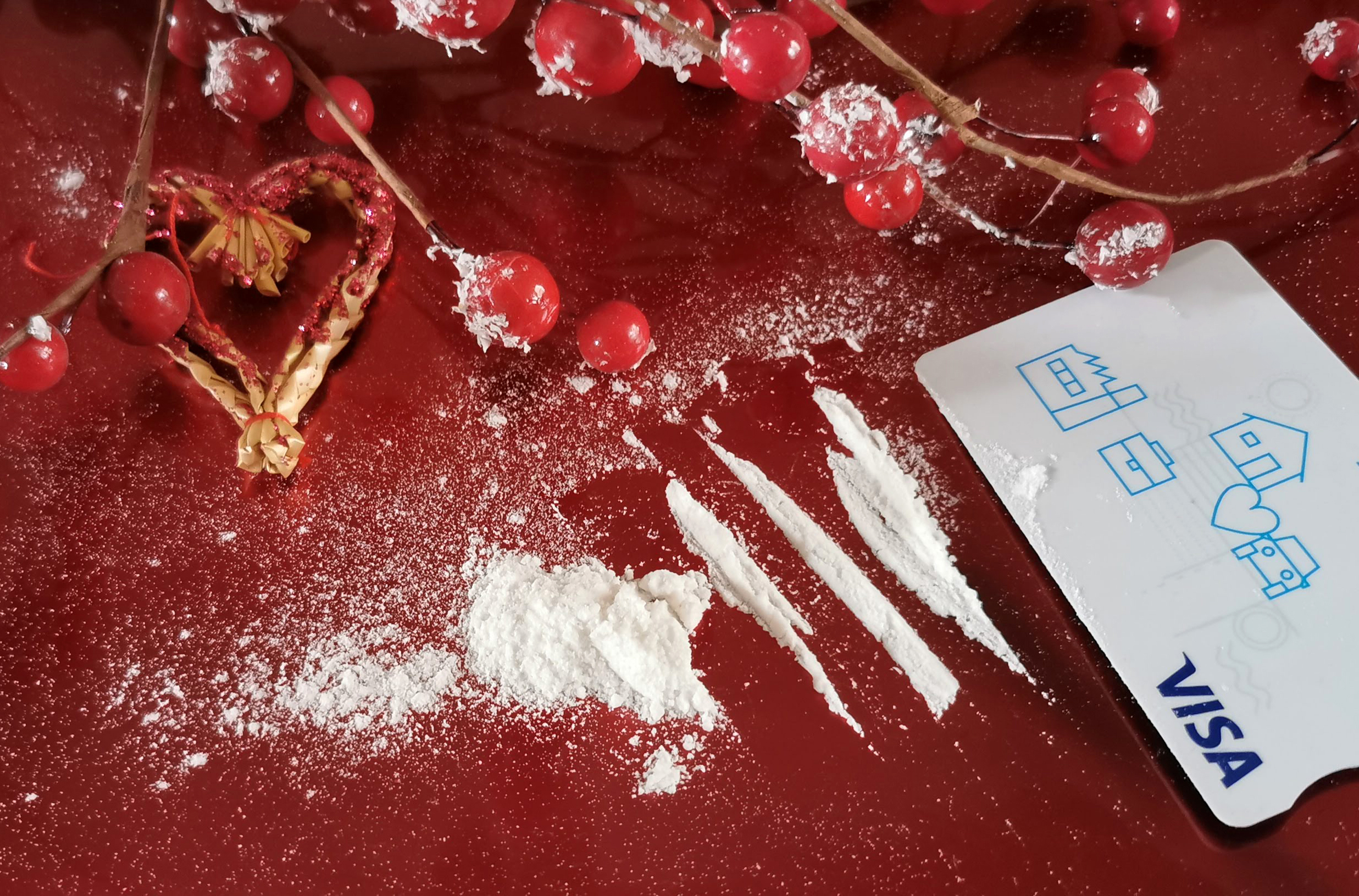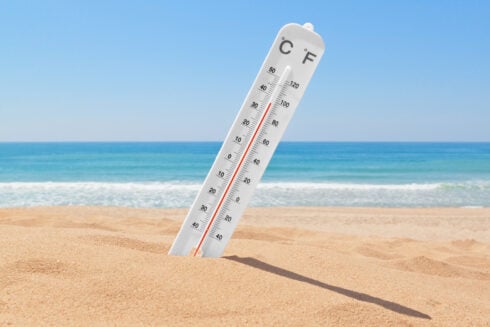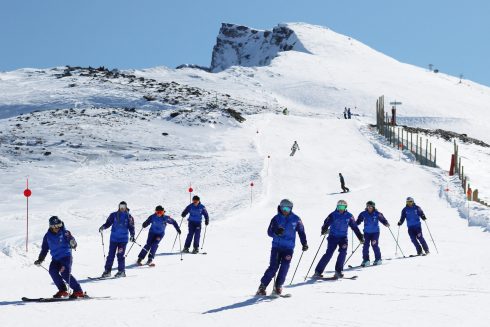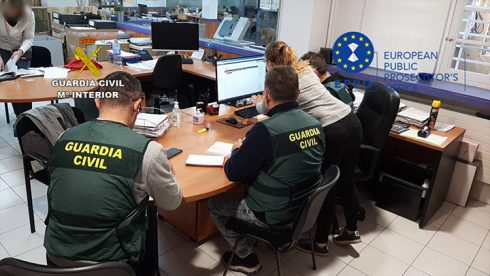WHILE most revellers will consume nothing stronger than ‘una copa’ this festive season, others will have a White Christmas where the snow isn’t lying on the ground – it’s up their noses.
With massive cocaine hauls at Spanish ports characterising 2022, and everyone from teens to old men reportedly lining up “las rayas”, does Spain have a significant drug problem?
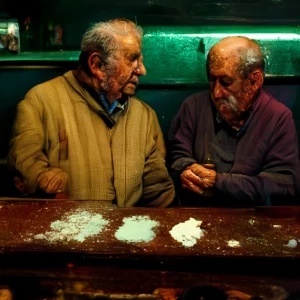
According to Spain’s Ministry of Health, the answer is – quite simply – yes. Spain ranks alongside the UK as Europe’s biggest consumer of the white stuff, and the trend isn’t slowing down anytime soon.
The Ministry of Health’s national drug survey (2021), shows that alcohol and tobacco remain Spain’s favourite drugs, followed by cannabis and cocaine.
The popularity of cocaine is bumped up by it constantly attracting new users. In 2019-20, a whopping 61,000 people aged 15-64 tried it for the first time. Worryingly, 3,000 new users were older teens.
The statistics show that heroin is no longer popular in Spain, while “party drugs”, such as amphetamine, ecstasy, ketamine, and “nexus” (sometimes called “pink cocaine”) fall behind cocaine as the drug of choice.
Perhaps unsurprisingly, almost 60% of people surveyed said it was easy to score drugs in Spain.
A year of port seizures
The Spanish police were kept busy in 2022, with many seizures at ports. Spain is a country with a vast coastline, which benefits drug gangs.
The end of the year was particularly lucrative for law enforcement. Mid-December saw the Guardia Civil intercept 56 kilos of cocaine at Algeciras, hidden in the submerged part of a ship.
During November, the police seized 5.5 tonnes from a container ship at the Port of Valencia, where it was packed amongst bags of fruit marked “Rey” (king). In October 2022, they seized 620 kilos at the same port.
November also saw Europol’s “Operation Desert Light” dismantle a Europe-wide drug gang that was reportedly responsible for a third of the country’s supply. One member was a British national from the Costa del Sol, Ryan Hail, 32, who went by the name of “Robo”.
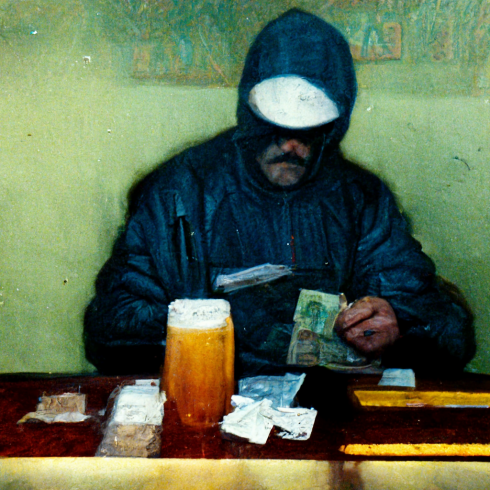
The same month witnessed Operation Dryad on the Costa del Sol, where Marbella’s “Coca Queen”, Maria Theresa Jaimes Caicedo, was apprehended as the leader of a 16-strong European drug ring. She had placed a kilo of cocaine in her bedroom, to invite people.
The Galician connection
The amount of cocaine seized at Spanish ports has spiralled since the 1980s. Coke officially reached Spain in 1987, when the Interior Ministry started documenting its seizures.
The drug originally came through Galicia, in the North of Spain, with fishermen seeing an opportunity to augment their tobacco smuggling operations. Gangs such as the Charlines transported product from South America and hashish from Morocco – as documented by the Netflix series, ‘Cocaine Coast’. Speedboats were commonplace at night, dropping off illicit packages. Working with the Charlines was said to be like taking a “master class in drug smuggling”.
While the police intercepted one tonne of coke in ‘Operation Necora’, during the early 1990s, since then, the volume concerned has risen by 5,000%. Today, more than 50 tonnes are seized annually.
“Piles” of coke
As far back as 2018, the United Nations said cocaine trafficking has reached “epidemic proportions”, while the Special Response Team against Organized Crime (GRECO) called it an “avalanche”. Oversupply left “coke piles” lying in the warehouses of Madrid and Seville.
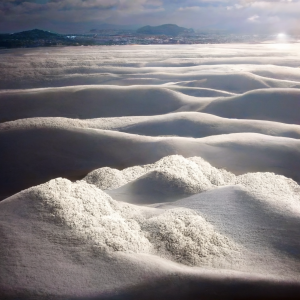
In Galicia, drug smuggling made a return, with help from historical gangs like Los Charlines. In 2018, 85-year-old Manuel Charline and his son, Melchor, were held as part of an anti-cocaine operation, living up to their legacy.
As the adage goes, in the “war against drugs”, the drugs are winning. Today, Spain tops the EU statistics for consuming the drug. In 1990, it ranked last.
Who are the main consumers?
Statistics show that drug experimentation generally begins at age 13-14 – with tobacco, alcohol, and cannabis – and may then progress to harder substances. In 2018, a shocking 2.4% of Spain’s 14-18s had tried cocaine.
The Olive Press spoke to a 16-year-old school pupil, who did not want to be named. He says: “Of the teens I know at secondary school, about 90% drink at parties, about 30% smoke weed and about 5% take other drugs. They are in their own clique and everybody else stays away – it’s just a problem.”
A concerned mother, from near Granada, reported teens “sniffing chalk mixed with ibuprofen”, and pretending it was something stronger.
Aside from this worrying teen trend, 80.9% of cocaine users are male, the most active group is 25-34, and the average profile is a man aged 45.
Why is it so popular, despite the risks?
Cocaine acts on a person’s brain’s reward and pleasure circuits, potentially causing compulsive usage, even if it’s damaging their finances, relationships, and work. In short, it’s “moreish” as the effects wear off quickly.
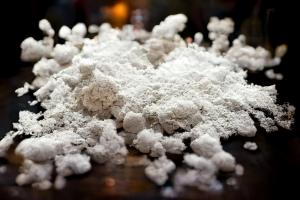
Says Andrew, a resident of Granada who attends free parties: “With events from dusk until dawn, you really want a boost. Cocaine combined with an Ecstasy tablet keeps you going. There’s nothing worse than being too tired to dance.”
However, not everyone agrees. Two club promoters, also from Granada, told the Olive Press that they prefer to remain drug-free and eat high-quality chocolate for an energy boost.
In recent years, Spain has seen a rise in popularity of alcohol and drug-free events based around ‘wellness’, such as Ecstatic Dance, where the participants eat cocoa, not coca.
The problems with cocaine abuse
People who think “Tres Reyes Magos” means “three huge lines” might be running into problems this Christmas and beyond. And it’s not just the immediate problem of hurting their wallet, with cocaine costing up to 70e a gram in some places.
While just 1% of Spain’s population are habitual cocaine users, the country’s “problem users” are classed as those who consume over 30 times in 12 months – this could mean every other weekend.
In 2019, cocaine was one of the leading causes of drug deaths in Spain. In nationwide hospitals, 44.7% of drug admissions were related to cocaine, accounting for 22,365 cases.
Spain’s rehabilitation centres commonly admit people addicted to alcohol, cocaine, and cannabis, with heroin falling behind. Women have a higher percentage of sedative abuse, especially after age 35.
For those who combine drugs and booze, there’s bad news: cocaine combines with alcohol to create cocaethylene, which worsens its toxicity. After the euphoric effects have worn off, this can cause anxiety. The combination is also harsh on the liver, possibly causing damage.
Longer term use can cause mental health issues, paranoia, psychosis, and memory loss.
Don’t grab the car or your partner
Cocaine and driving are a particularly bad combination.A 2016 study showed that, of 275 dead drivers, 30% had positive drug tests. Of those, 49% had taken cocaine. There’s also the risk of ‘multas’ for driving under the influence of alcohol and drugs. Depending on the results, this can set you back 500-1,000 euros, six points, license removal, or prison for 3-6 months. Drugs found to be in your system from before the roadside test can result in a substantial penalty, even if you’re not “under the influence” at the time.
There’s also the issue of interpersonal relationships declining. According to Gencat, the government of Barcelona, between 40% and 80% of drug dependent people will cause or experience domestic violence. Cocaine is clearly not known for encouraging empathetic behaviour towards others.
Where’s the end of the line?
Despite carrying well-documented problems with finance, health, addiction, gang activity, motoring penalties and possibly jail, Spain’s cocaine problem has no easy solution, with the substance remaining a drug of choice amongst the population.
It seems obvious that, this Christmas, thousands of people will throw caution to the wind and reach for their special ‘farina’, as well as the ‘polverones’ and ‘mantecados’.
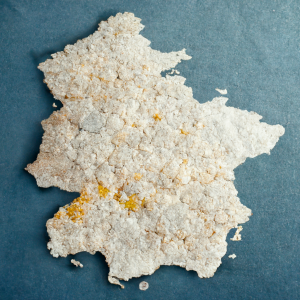
Cocaine in Spanish movies
- ‘Cocaine Coast’ – about the trade in 1980’s Galicia.
- ‘The Business’ – starting Danny Dyer, a movie about a young Cockney becoming involved in the drug trade on the Costa del Sol.
- ‘White Lines’ – “a drug-fuelled tribute to Ibiza”
READ MORE
Valencia’s largest ever bust nets entire roomful of 5.5 tonnes of cocaine
EXCLUSIVE: Police bring down ‘cocaine queen’s 25-year smuggling ring in Spain
Click here to read more Other News from The Olive Press.

